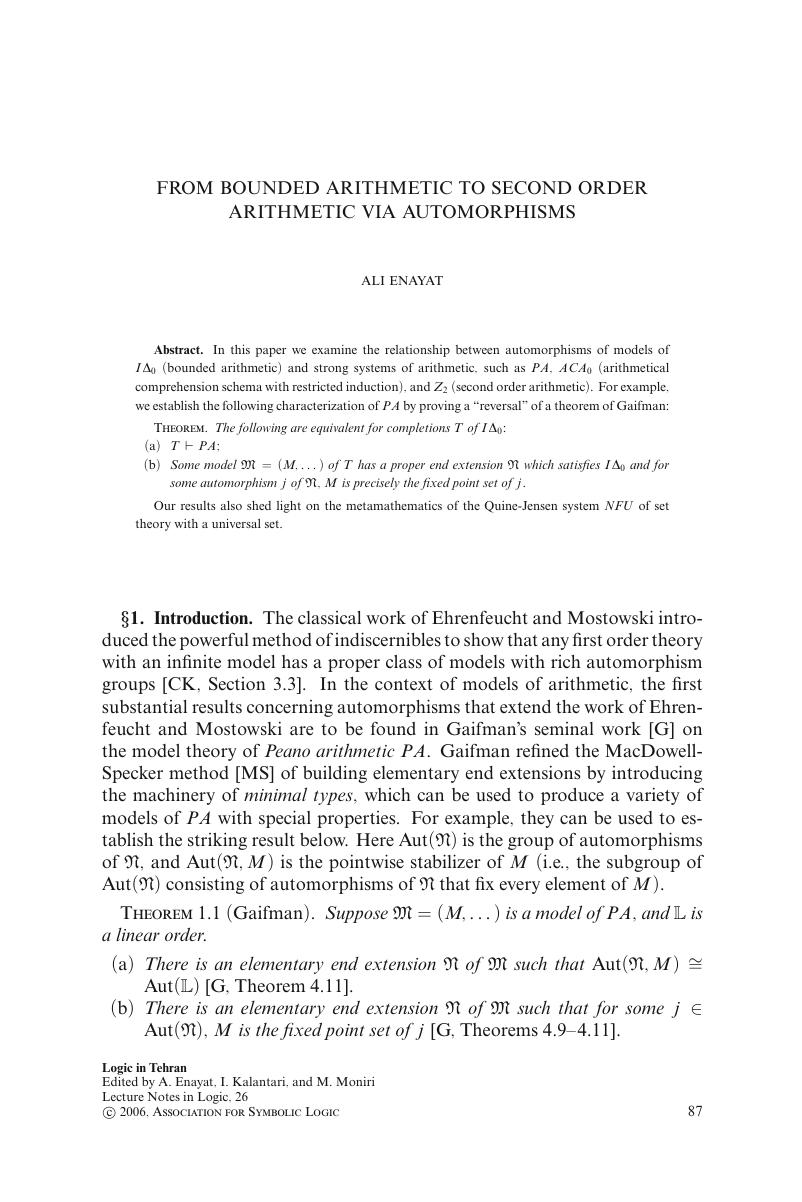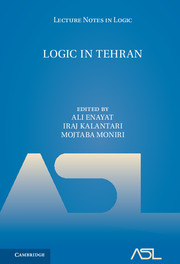Book contents
- Frontmatter
- Contents
- Preface
- Workshop and conference on logic, algebra, and arithmetic: Tehran, October 18–22, 2003
- Foreword
- Mathematical logic in Iran: A perspective
- Real closed fields and IP-sensitivity
- Categoricity and quantifier elimination for intuitionistic theories
- Primes and irreducibles in truncation integer parts of real closed fields
- On explicit definability in arithmetic
- From bounded arithmetic to second order arithmetic via automorphisms
- Local-global principles and approximation theorems
- Beatty sequences and the arithmetical hierarchy
- Specker's theorem, cluster points, and computable quantum functions
- Additive polynomials and their role in the model theory of valued fields
- Dense subfields of henselian fields, and integer parts
- A recursive nonstandard model for open induction with GCD property and cofinal primes
- Model theory of bounded arithmetic with applications to independence results
- Ibn-Sina's anticipation of the formulas of Buridan and Barcan
- Remarks on algebraic D-varieties and the model theory of differential fields
- A simple positive Robinson theory with LSTP ≠ STP
- Categories of theories and interpretations
- References
From bounded arithmetic to second order arithmetic via automorphisms
Published online by Cambridge University Press: 30 March 2017
- Frontmatter
- Contents
- Preface
- Workshop and conference on logic, algebra, and arithmetic: Tehran, October 18–22, 2003
- Foreword
- Mathematical logic in Iran: A perspective
- Real closed fields and IP-sensitivity
- Categoricity and quantifier elimination for intuitionistic theories
- Primes and irreducibles in truncation integer parts of real closed fields
- On explicit definability in arithmetic
- From bounded arithmetic to second order arithmetic via automorphisms
- Local-global principles and approximation theorems
- Beatty sequences and the arithmetical hierarchy
- Specker's theorem, cluster points, and computable quantum functions
- Additive polynomials and their role in the model theory of valued fields
- Dense subfields of henselian fields, and integer parts
- A recursive nonstandard model for open induction with GCD property and cofinal primes
- Model theory of bounded arithmetic with applications to independence results
- Ibn-Sina's anticipation of the formulas of Buridan and Barcan
- Remarks on algebraic D-varieties and the model theory of differential fields
- A simple positive Robinson theory with LSTP ≠ STP
- Categories of theories and interpretations
- References
Summary

- Type
- Chapter
- Information
- Logic in Tehran , pp. 87 - 113Publisher: Cambridge University PressPrint publication year: 2006



